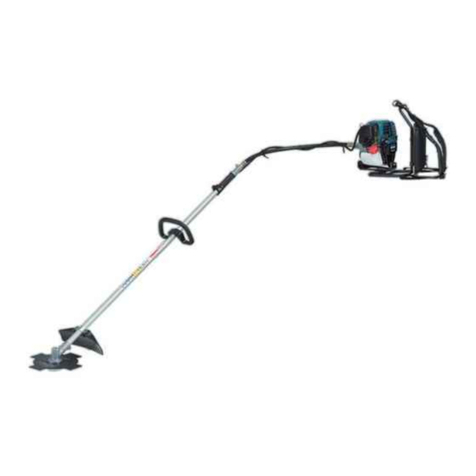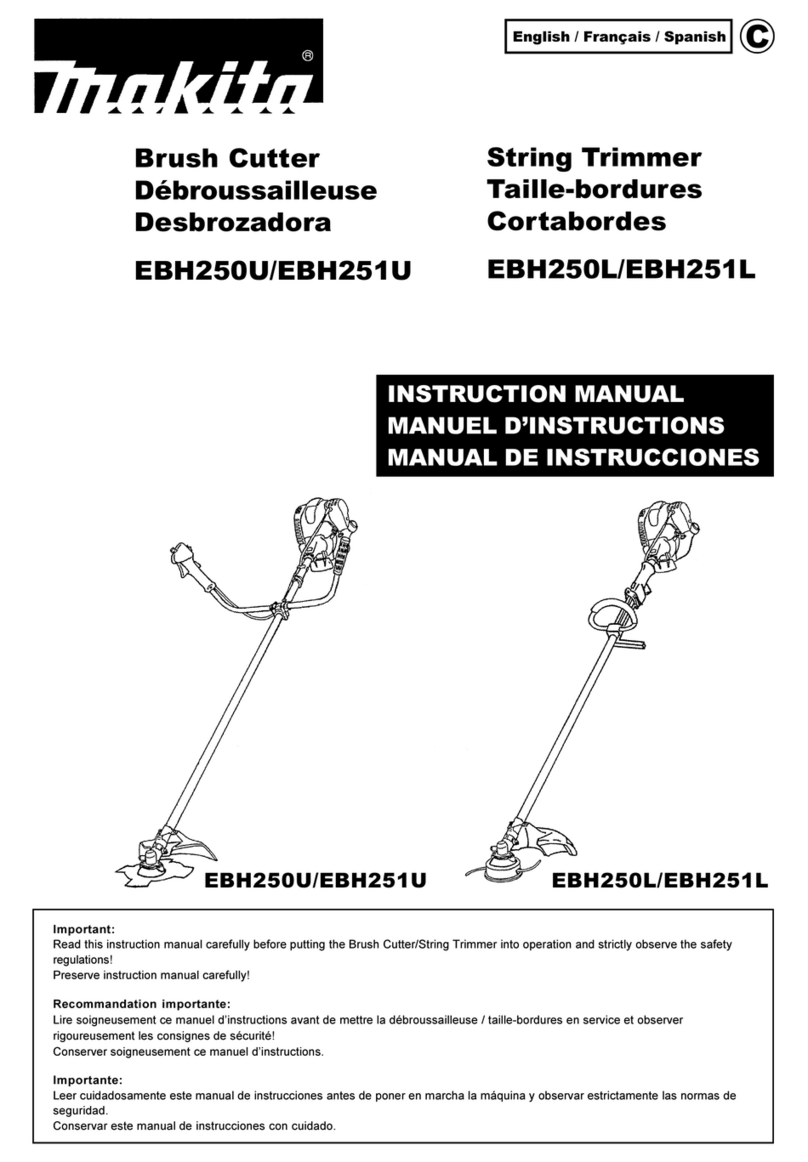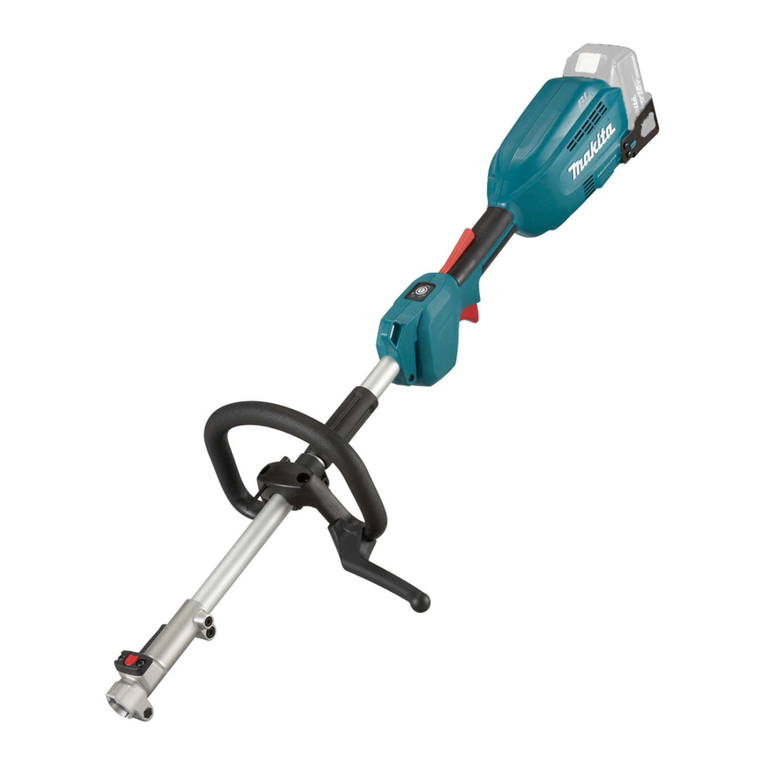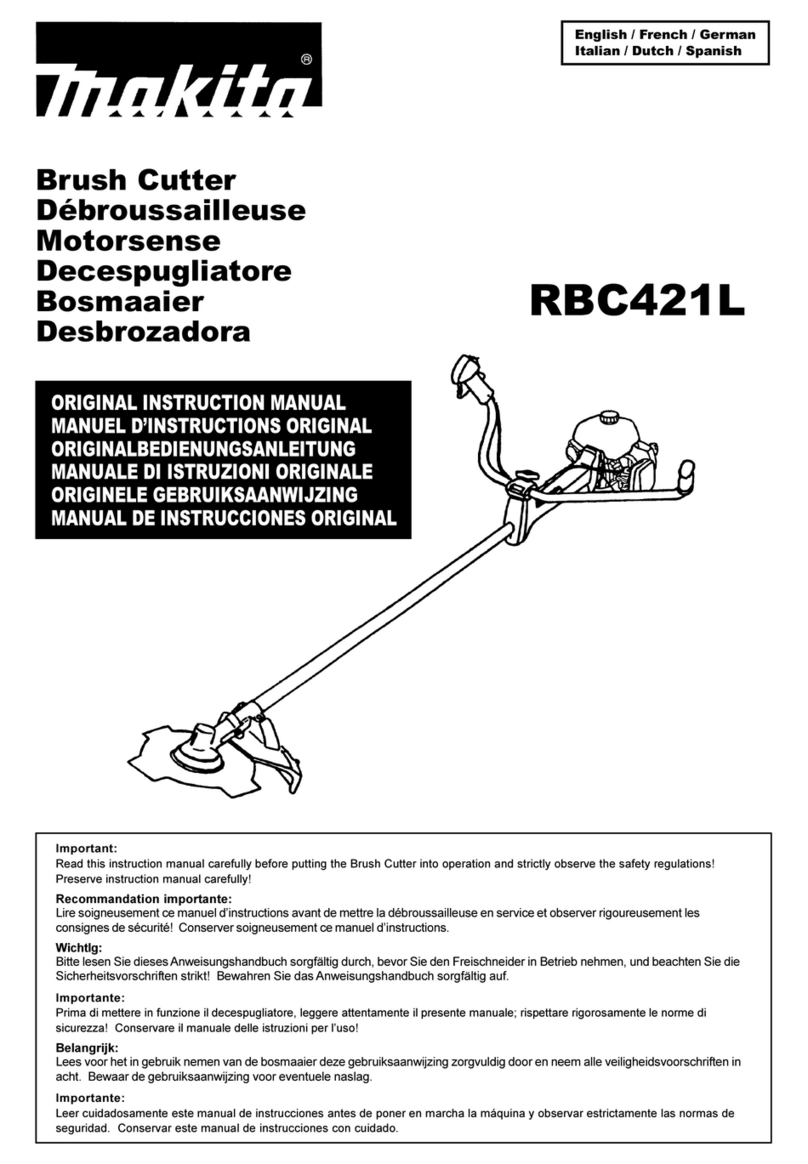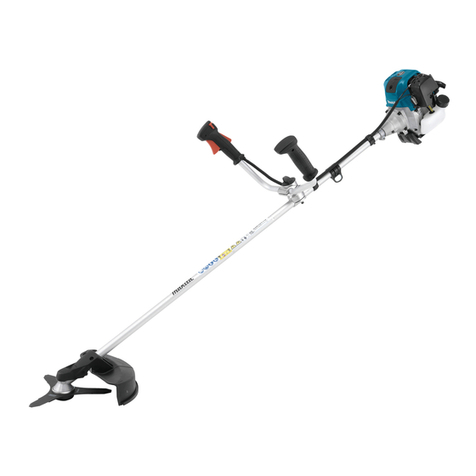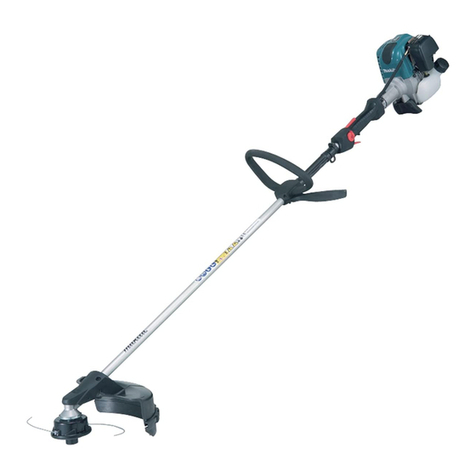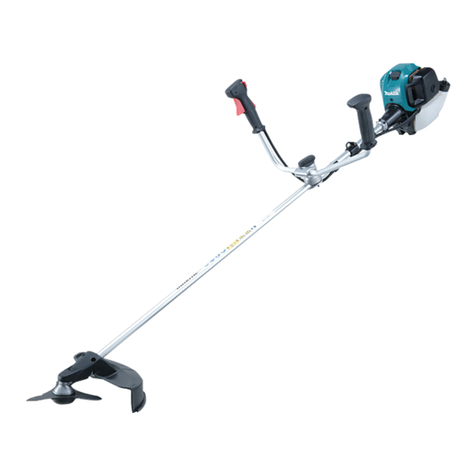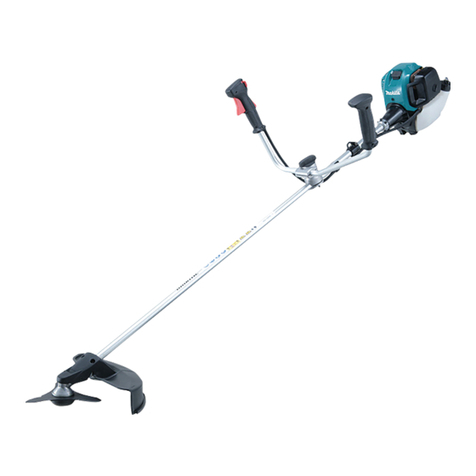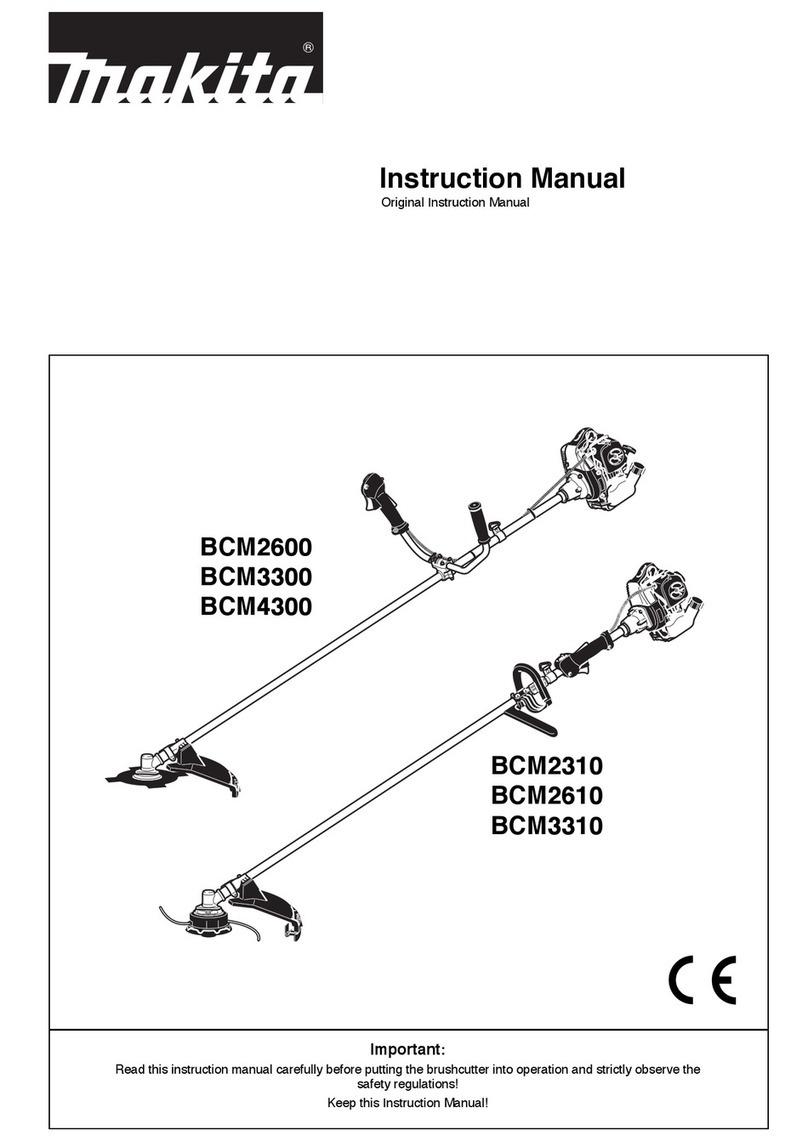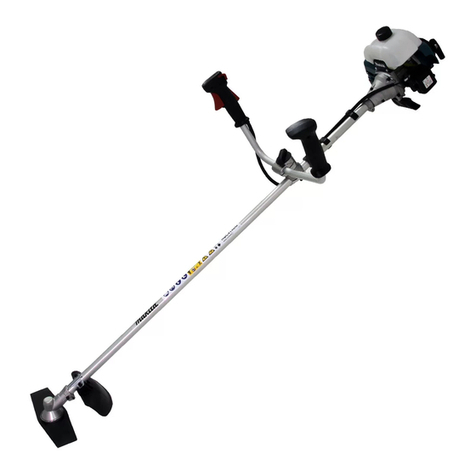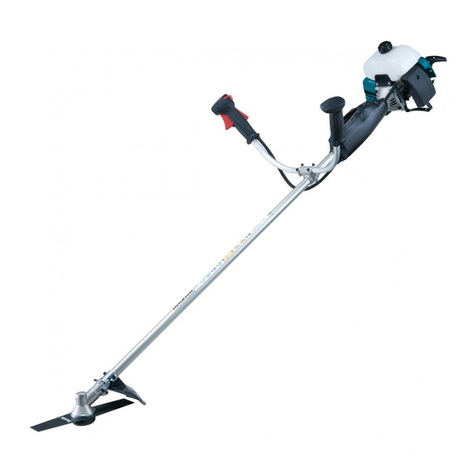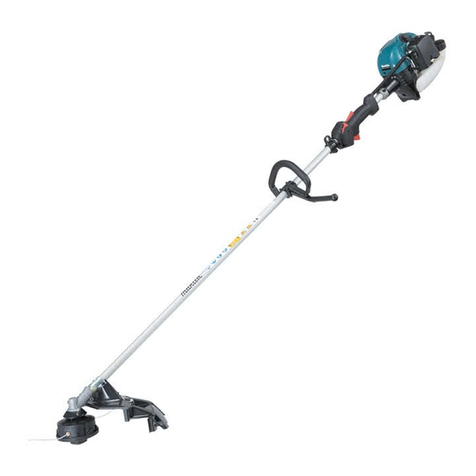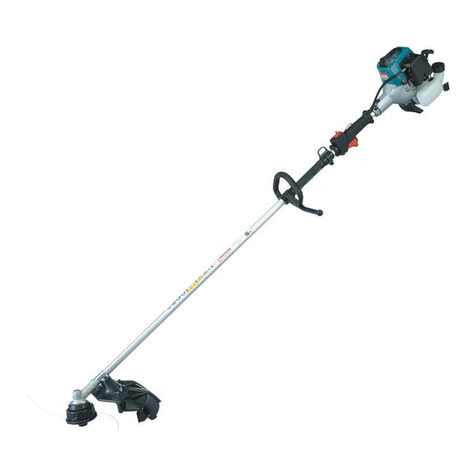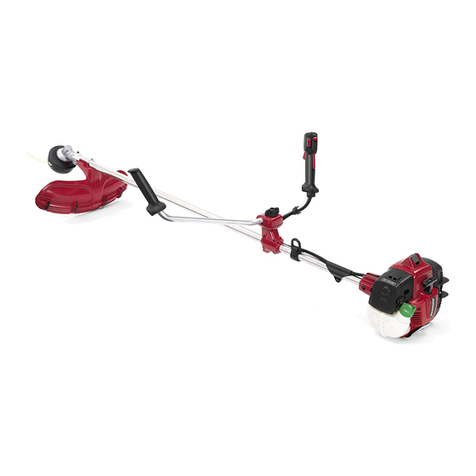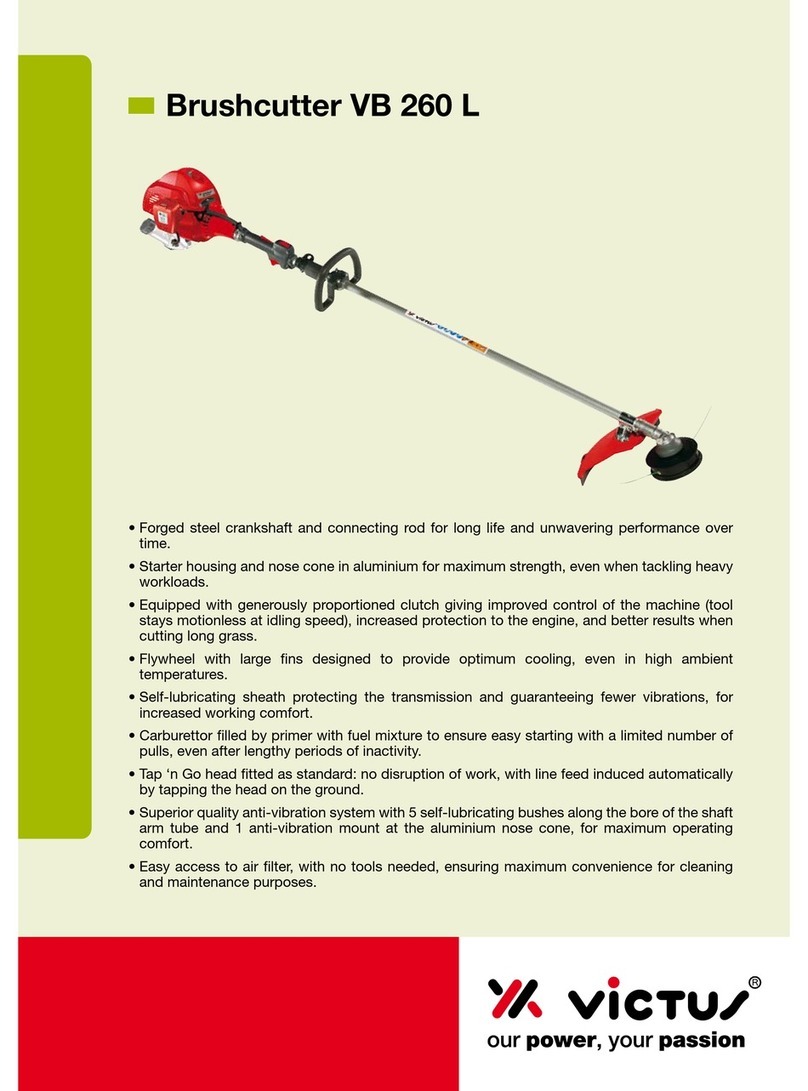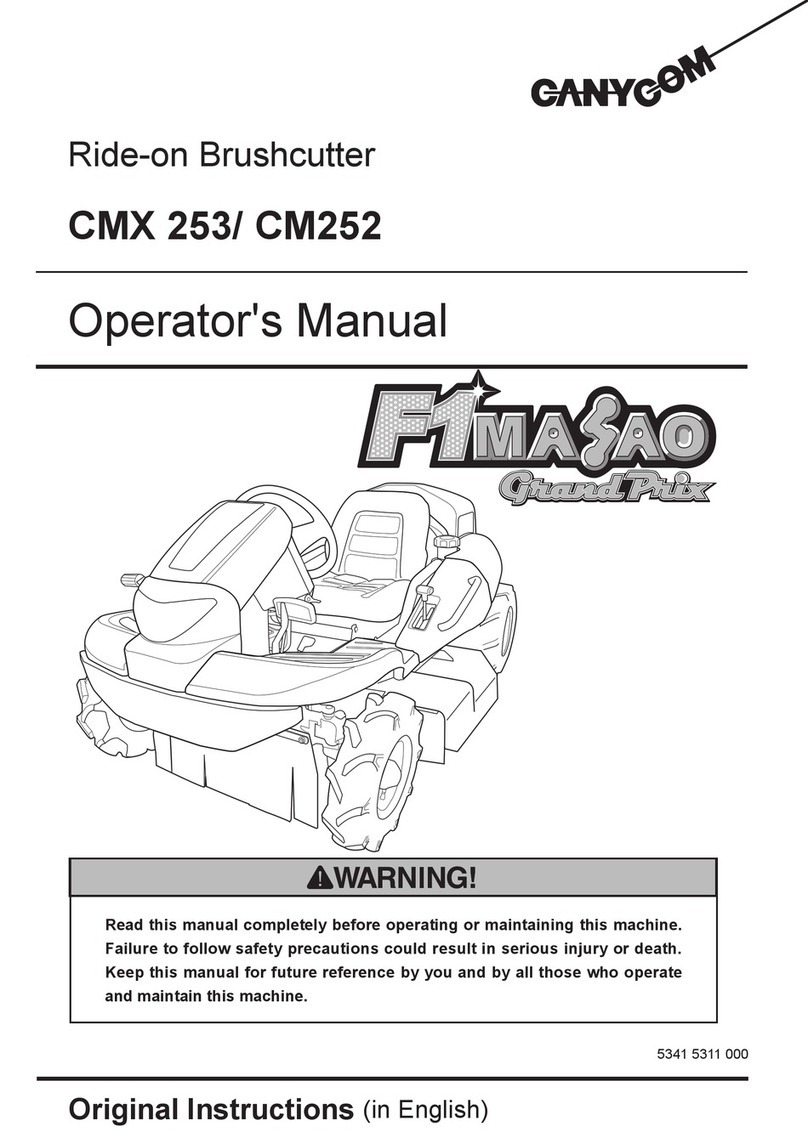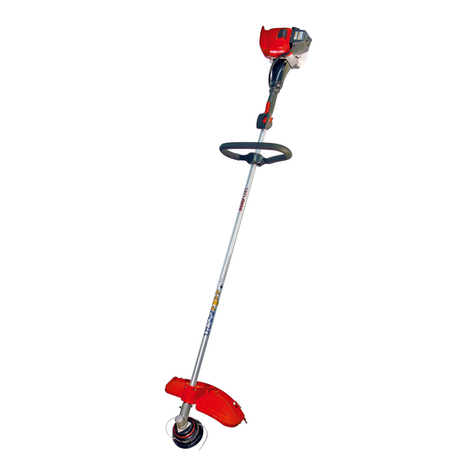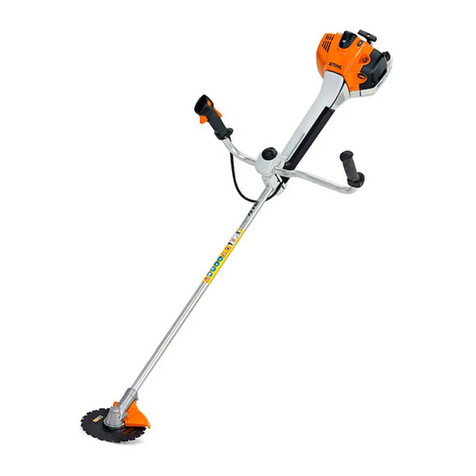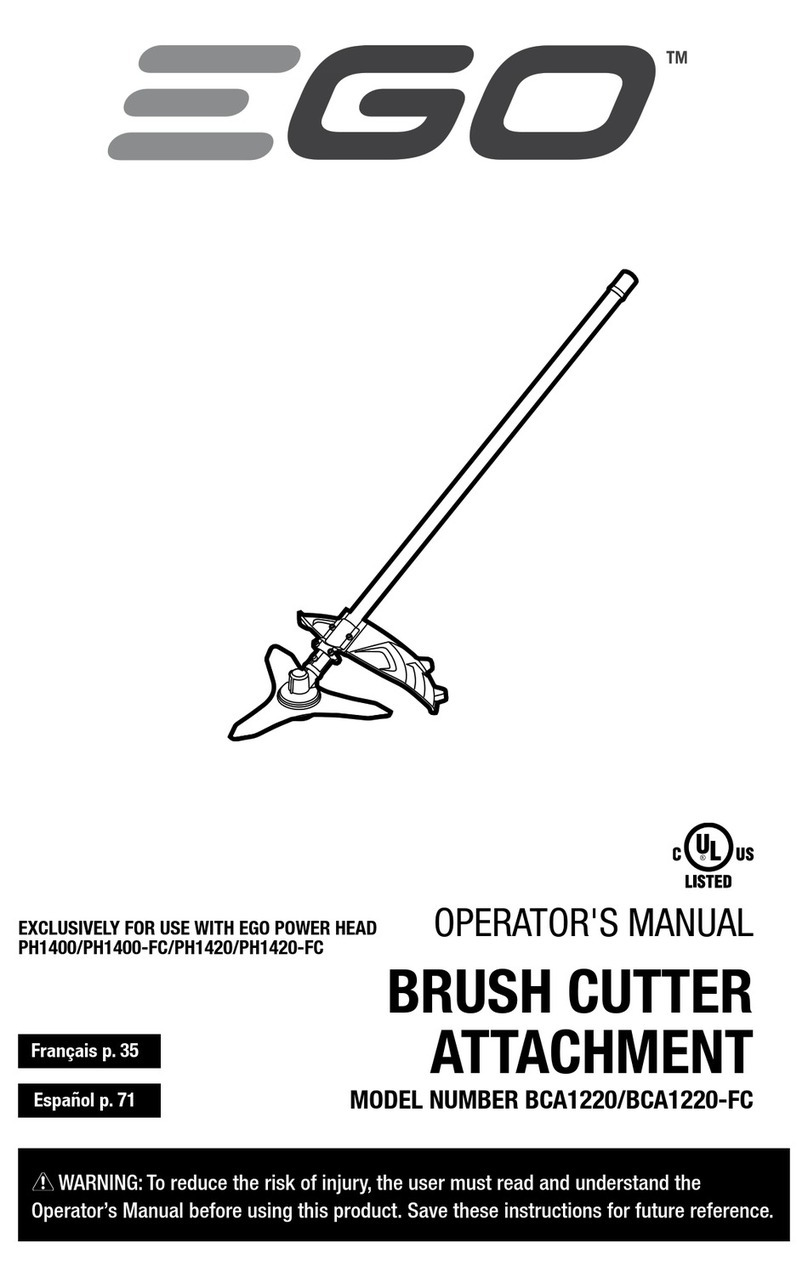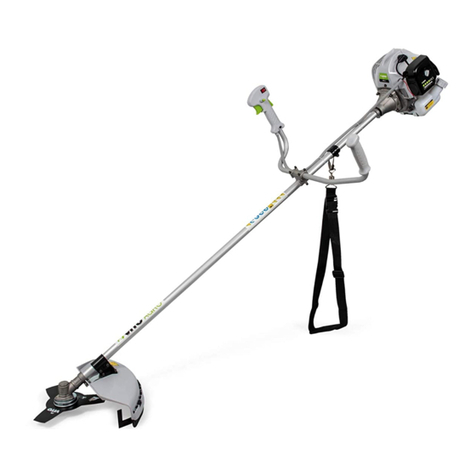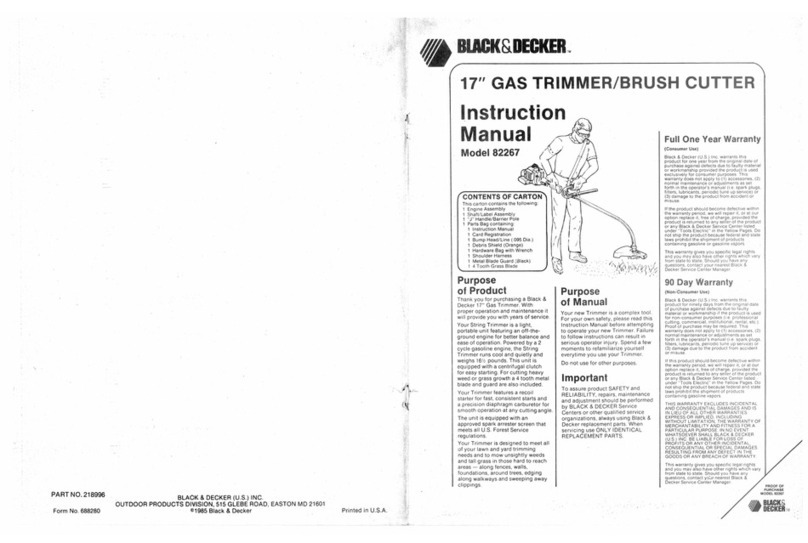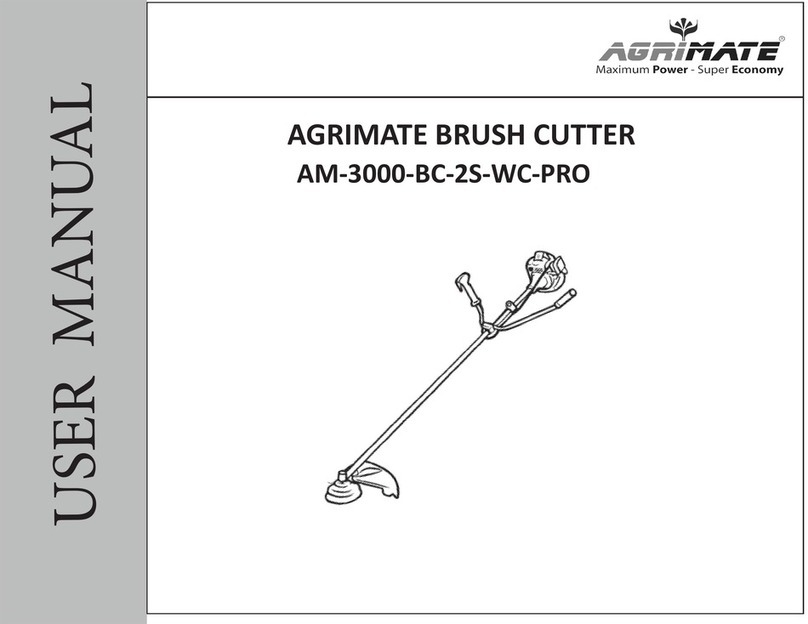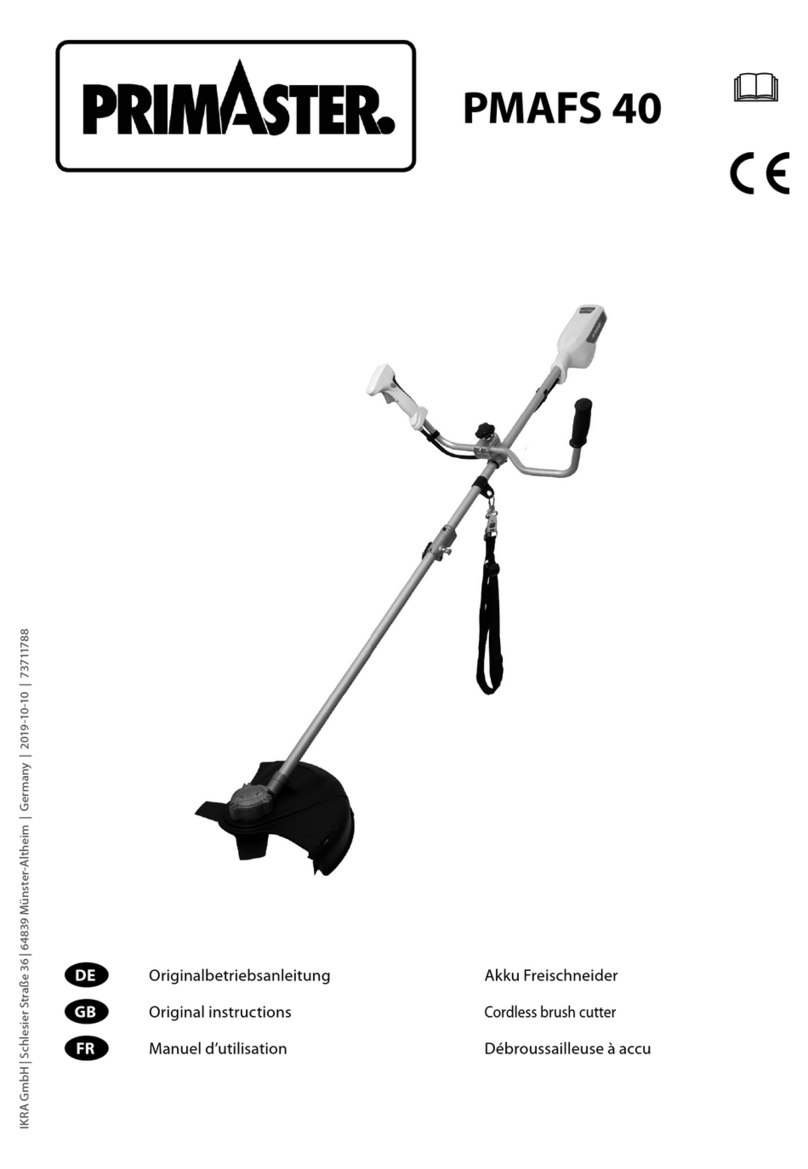4
Start the brushcutter only in accordance with the instructions.
Do not use any other methods for starting the engine!
Use the brushcutter and the tools supplied only for applications–
specied.
Start the brushcutter engine only after the entire tool has been–
assembled. Operation of the tool is permitted only after all the
appropriate accessories are attached!
Before starting, make sure that the cutter blade will not contact–
any objects such as branches, stones, etc.
The engine is to be stopped immediately if there are any engine–
problems.
Should the cutter blade hit stones or any other objects–
immediately stop the engine and inspect the cutter blade.
Inspect the cutter blade at frequent regular intervals for damage–
(detect hairline cracks by means of a tapping-noise test).
A familiar ringing sound should be heard.–
Operate the brushcutter only with the shoulder strap attached. It–
should be properly adjusted before putting the brushcutter into
operation. It is essential to adjust the shoulder strap to the user’s
size to prevent fatigue occurring during use or loss of control of
the tool. Never hold the tool with one hand during use.
During operation always hold the brushcutter with both hands.–
Always ensure a safe, well-balanced footing.
Operate the brushcutter in such a manner as to avoid inhalation–
of the exhaust gases. Never run the engine in enclosed rooms
(risk of suffocation and gas poisoning). Carbon monoxide is an
odorless gas. Always ensure there is adequate ventilation.
Stop the engine when resting and when leaving the brushcutter–
unattended. Place it in a sale location to prevent danger to
others, setting re to combustible materials, or damage to the
machine.
Never lay down the hot brushcutter onto dry grass or onto any–
combustible materials.
The cutter blade must be used with its appropriate guard. Never–
run the tool without this guard!
All protective parts and guards supplied with the machine must–
be used during operation.
Never operate the engine with a faulty exhaust mufer.–
Stop the engine during transport.–
During transport over long distances the tool protection included–
with the equipment must always be used.
Put the brushcutter in upright position and x it during care or –
truck transportation to avoid damage.
When transporting the brushcutter, ensure that the fuel tank is–
completely empty, to avoid fuel leakage.
Refuelling
To reduce the risk of re and burn injury, handle fuel with care it –
is highly ammable. Stop the engine during refuelling, keep well
away from open ame and do not smoke.
Avoid skin contact with petroleum products. Do not inhale fuel–
vapor. Always wear protective gloves during refuelling. Change
and clean protective clothing at regular intervals.
Take care not to spill either fuel or oil. Always wipe unit dry before–
starting engine. Allow wet cloths to dry before disposing in proper,
covered container to prevent spontaneous combustion.
Avoid any fuel contact with your clothing. Change your clothing–
immediately if fuel has spilled on it (danger hazard).
Inspect the fuel cap at regular intervals making sure that stays–
securely fastened.
Carefully tighten the locking screw of the fuel tank. Change–
locations to start the engine (at least 10 ft. or 3 meters away from
the place of refuelling).
Never refuel in closed rooms. Fuel vapors accumulate at ground–
level (risk of explosions).
Only transport and store fuel in approved containers. Make sure–
stored fuel is not accessible to children.
Do not attempt to refuel a hot or a running engine.–
When mixing gasoline with two-stroke engine oil, use only–
gasoline which contains no ethanol or methanol (types of
alcohol). This will help to prevent damage to fuel lines and other
engine parts.
Resting•
Transport•
Refuelling•
Maintenance•
Tool Replacement•
3 m (10 FT)
